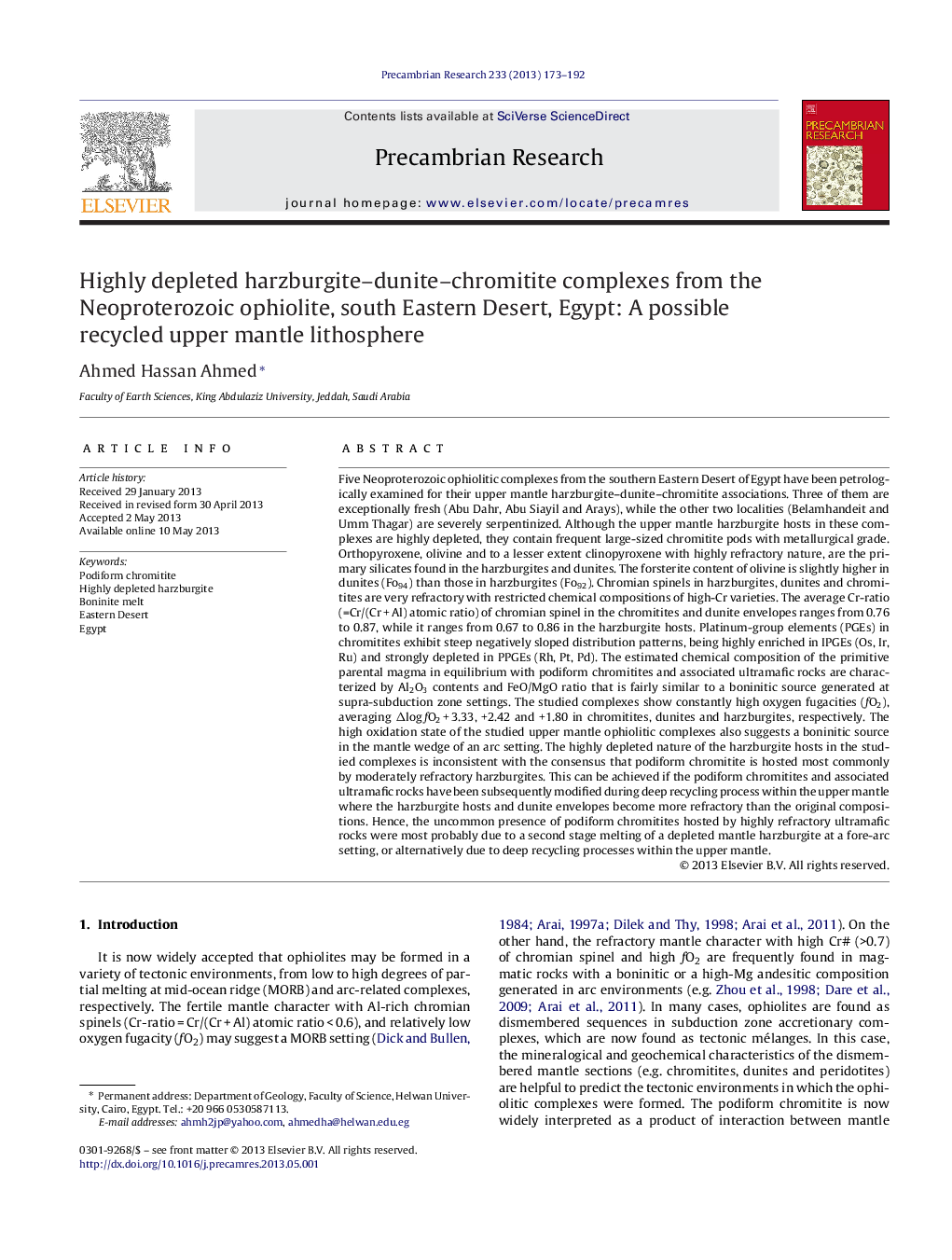| Article ID | Journal | Published Year | Pages | File Type |
|---|---|---|---|---|
| 6442349 | Precambrian Research | 2013 | 20 Pages |
Abstract
Five Neoproterozoic ophiolitic complexes from the southern Eastern Desert of Egypt have been petrologically examined for their upper mantle harzburgite-dunite-chromitite associations. Three of them are exceptionally fresh (Abu Dahr, Abu Siayil and Arays), while the other two localities (Belamhandeit and Umm Thagar) are severely serpentinized. Although the upper mantle harzburgite hosts in these complexes are highly depleted, they contain frequent large-sized chromitite pods with metallurgical grade. Orthopyroxene, olivine and to a lesser extent clinopyroxene with highly refractory nature, are the primary silicates found in the harzburgites and dunites. The forsterite content of olivine is slightly higher in dunites (Fo94) than those in harzburgites (Fo92). Chromian spinels in harzburgites, dunites and chromitites are very refractory with restricted chemical compositions of high-Cr varieties. The average Cr-ratio (=Cr/(Cr + Al) atomic ratio) of chromian spinel in the chromitites and dunite envelopes ranges from 0.76 to 0.87, while it ranges from 0.67 to 0.86 in the harzburgite hosts. Platinum-group elements (PGEs) in chromitites exhibit steep negatively sloped distribution patterns, being highly enriched in IPGEs (Os, Ir, Ru) and strongly depleted in PPGEs (Rh, Pt, Pd). The estimated chemical composition of the primitive parental magma in equilibrium with podiform chromitites and associated ultramafic rocks are characterized by Al2O3 contents and FeO/MgO ratio that is fairly similar to a boninitic source generated at supra-subduction zone settings. The studied complexes show constantly high oxygen fugacities (fO2), averaging Îlog fO2 + 3.33, +2.42 and +1.80 in chromitites, dunites and harzburgites, respectively. The high oxidation state of the studied upper mantle ophiolitic complexes also suggests a boninitic source in the mantle wedge of an arc setting. The highly depleted nature of the harzburgite hosts in the studied complexes is inconsistent with the consensus that podiform chromitite is hosted most commonly by moderately refractory harzburgites. This can be achieved if the podiform chromitites and associated ultramafic rocks have been subsequently modified during deep recycling process within the upper mantle where the harzburgite hosts and dunite envelopes become more refractory than the original compositions. Hence, the uncommon presence of podiform chromitites hosted by highly refractory ultramafic rocks were most probably due to a second stage melting of a depleted mantle harzburgite at a fore-arc setting, or alternatively due to deep recycling processes within the upper mantle.
Related Topics
Physical Sciences and Engineering
Earth and Planetary Sciences
Geochemistry and Petrology
Authors
Ahmed Hassan Ahmed,
